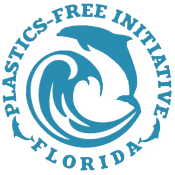Scientists from Columbia University are raising alarm bells about the amount of small flecks of plastic — known as nanoplastics — in bottled drinking water. Their research, which was published on Jan. 8 in the journal Proceedings of the National Academy of Sciences, found that three popular plastic water bottle brands (which went unnamed in the research) had 10 to 100 times greater amounts of nanoplastics than previously estimated.
That’s not good news, especially since many people pick bottled water over tap assuming that it’s the safer, cleaner option. Nanoplastics — which are tiny plastic particles that are smaller than .001 millimeters, as well as the larger microplastics, which are particles smaller than 5 millimeters (about the size of pencil eraser) — are potentially a threat to our health. Here’s what to know about these plastics — and what you can possibly do to avoid them.
Why are microplastics and nanoplastics potentially harmful?
Microplastics and nanoplastics occur when larger pieces of plastic are broken down into small pieces. These plastic particles are now ubiquitous — found in our water supply, in soil, in the air and in the food we eat. These particles are also now in us.
“Several recent studies have documented the accumulation of microplastics in the human body, including the placenta, heart tissue, lung tissue and others,” Tasha Stoiber, a senior scientist at the Environmental Working Group, tells Yahoo Life. This is a problem, she notes, because microplastics can be carriers for chemical contaminants. Recent studies are now documenting the potential harms from microplastics exposure, which include inflammation in the body, changes in metabolism and damage to reproductive health.

